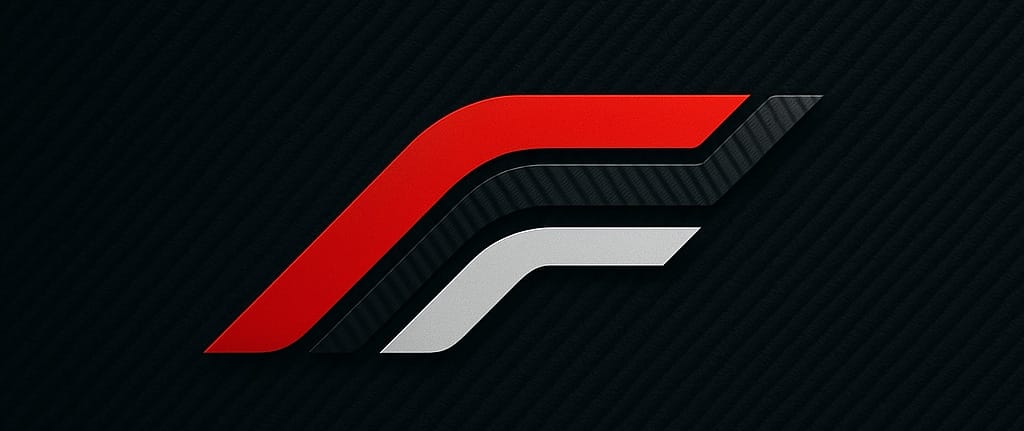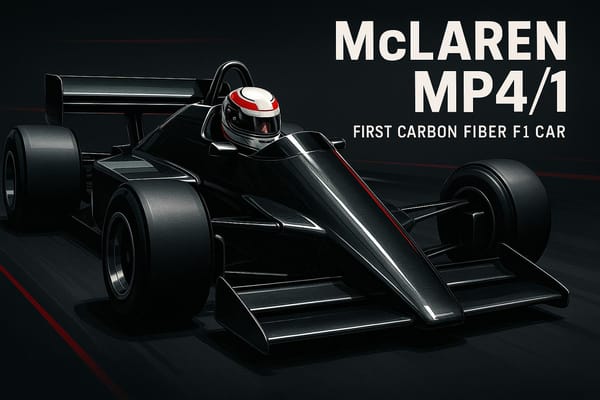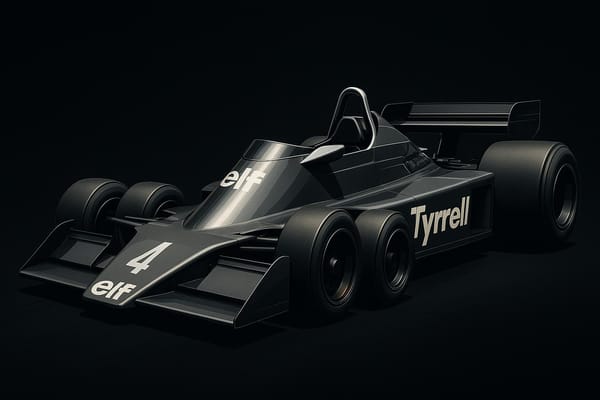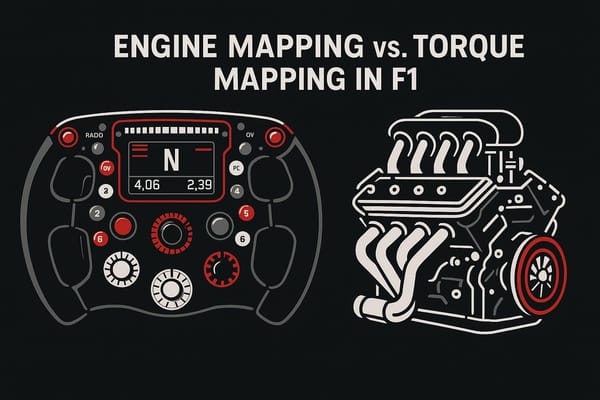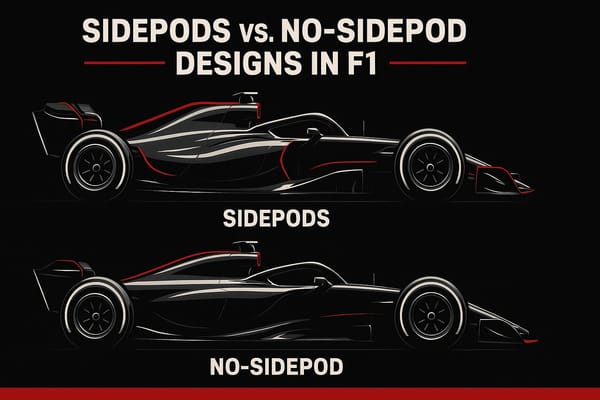Pit Lane Safety Rules Explained
Explore the intricate safety rules and advanced technologies ensuring safety in Formula 1 pit lanes, from gear to training programs.
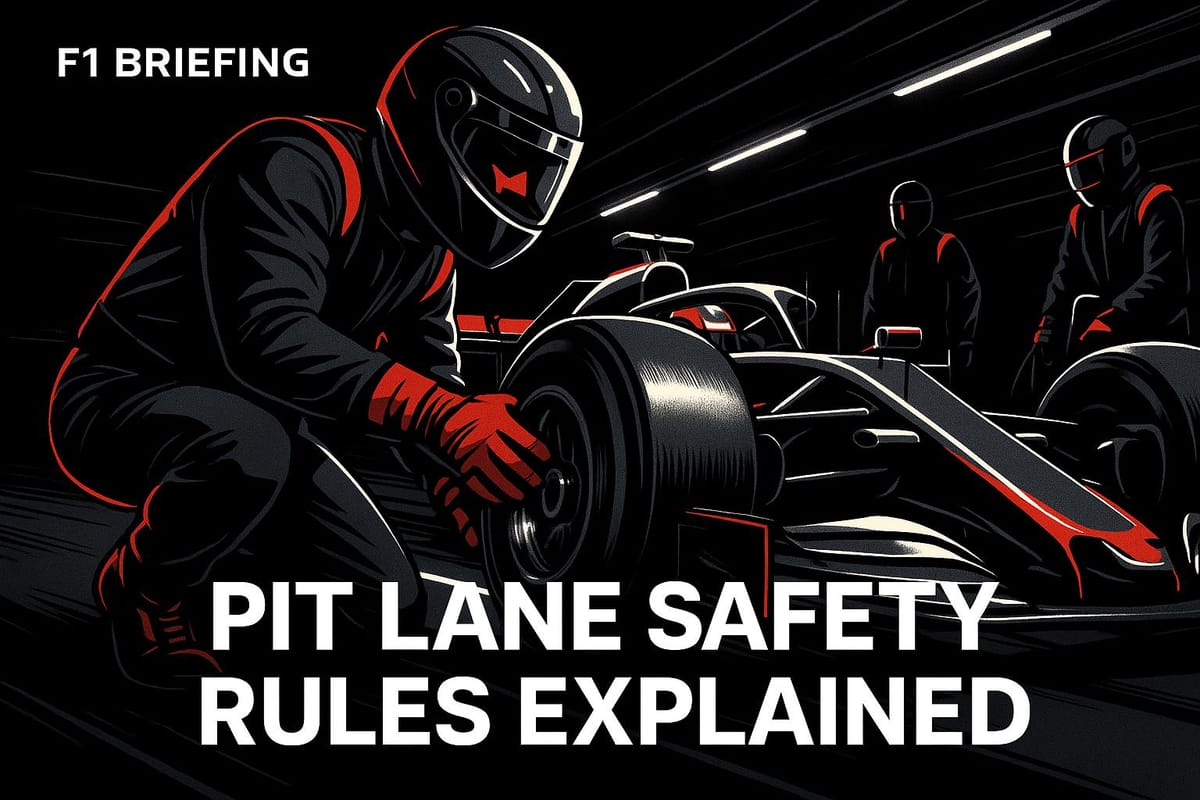
The Formula 1 pit lane is one of the most high-pressure and dangerous areas in motorsport. Here's what you need to know about the rules and safety measures in place to protect drivers and crew members:
- Strict FIA Rules: Speed limits, marked boundaries, and penalties for violations ensure safe pit lane operations.
- Protective Gear: Crew members wear fire-resistant suits, advanced helmets, and biometric gloves for safety and health monitoring.
- Advanced Technology: AI systems, infrared sensors, and automated car release mechanisms minimize risks.
- Training Programs: Regular emergency drills, equipment checks, and biometric training enhance crew readiness.
- Safety Improvements: Innovations like LiDAR, thermal imaging, and augmented reality tools have reduced pit lane incidents by 45% between 2020 and 2024.
- Penalties for Violations: Teams face hefty fines, time penalties, or race bans for unsafe practices.
These measures, combined with ongoing monitoring and technological advancements, make F1 pit lanes safer for everyone involved.
The Insane Rules of the F1 Pit Lane – You Won't Believe #3!
FIA Safety Rules
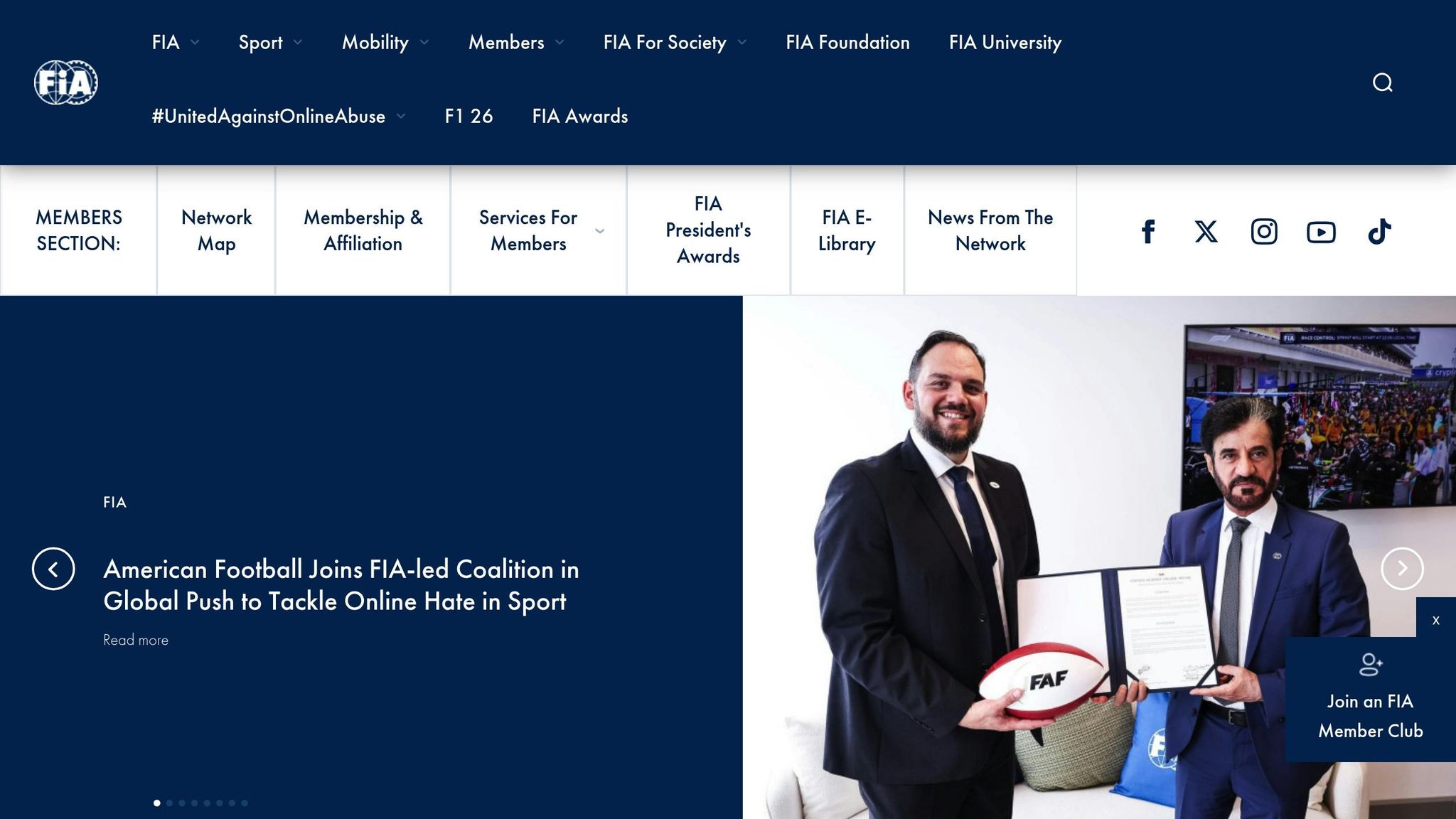
The FIA has strict rules for pit lane entry and exit to ensure safety. Drivers are required to follow the marked boundaries when merging, which helps avoid collisions. Any failure to comply can result in penalties, reinforcing the importance of discipline. Below, we’ll cover speed limits, entry protocols, and other key FIA regulations.
Team Safety Requirements
F1 pit crews operate under strict safety protocols that combine advanced protective gear with rigorous training. Teams must adhere to FIA standards while also implementing their own tailored safety measures.
Safety Gear Requirements
All crew members are required to wear FIA-certified protective gear. For example, the fire-resistant Nomex suit can endure temperatures up to 1,292°F for at least 10 seconds. Red Bull Racing's 2024 suits incorporate 3M's Nextel ceramic fibers, which improve heat dissipation by 40% compared to earlier designs.
Helmets must comply with ECE 22.06 standards and include:
| Protection Type | Requirement | Testing Standard |
|---|---|---|
| Impact Protection | 360° impact protection | 7.5 m/s test |
| Fire Resistance | Outer shell withstands heat | 800°C (1,472°F) for 45 seconds |
| Visibility | Wider eye ports for better peripheral vision | Enhanced peripheral vision |
Biometric gloves, introduced in 2023, provide real-time health data - such as blood oxygen levels and impact forces - to medical teams.
These advancements in gear are paired with systems designed to prevent premature car releases.
Car Release Safety Rules
To prevent unsafe car releases, teams rely on advanced technology. Mercedes' "Sentinel" system, introduced in 2024, has reduced unsafe release incidents by 78%. Key features include:
- High-speed 120Hz cameras monitoring nearby pit boxes
- Infrared beam detection systems
- AI algorithms that predict pit lane traffic patterns
Penalties for violations are steep. Teams face $25,000 fines per incident, and repeated offenses - three unsafe releases in a season - can result in race bans. The FIA's graduated penalty system, launched in 2025, reflects a stronger focus on pit lane safety.
These technical safeguards are reinforced by rigorous training programs.
Safety Training Programs
Ferrari's training regimen, which includes monthly emergency drills, reduced extraction times from 22 to 14 seconds in early 2024.
Teams are also required to maintain detailed safety logs, including:
- Daily equipment inspections
- Monthly emergency drill videos
- Quarterly biometric training records, with a minimum of 25 training hours
FIA data highlights a 62% drop in thermal injuries and a 41% reduction in impact injuries between 2023 and 2024. Alpine F1 Team's record of 587 consecutive incident-free pit stops further showcases the success of these comprehensive safety measures.
Safety Technology
From 2020 to 2024, advanced tools like real-time monitoring, automation, and predictive analytics helped reduce pit lane incidents by 45%. These systems work alongside FIA rules and team protocols to bring measurable improvements to safety.
Crew Safety Monitoring
Biometric systems are making a difference. For example, Mercedes-AMG Petronas' SmartCap EEG headwear helped cut fatigue-related mistakes by 18% during high-pressure races.
Here’s how health monitoring systems are improving safety:
| Monitoring Type | Key Metrics | Safety Impact |
|---|---|---|
| Biometric Vests | Heart rate, temperature, muscle strain | Real-time condition assessment |
| EEG Headwear | Focus levels, fatigue indicators | 18% reduction in errors |
| Thermal Imaging | Equipment temperature, hotspots | 28% decrease in hand injuries |
Alpine's "PitSync" platform takes things further by combining biometric data, car telemetry, and track sensors. It can even delay car releases automatically if crew heart rates exceed 120 BPM and traffic is within 164 feet.
In addition to monitoring, automated systems step in to address immediate risks.
Automated Safety Systems
McLaren uses a LiDAR-based detection system that maps real-time 3D movement in pit lanes. If a vehicle comes within 4.9 feet of crew members, helmet-mounted LED alerts give a 1.3-second warning during practice.
Haas F1 Team employs FLIR cameras for thermal monitoring, catching temperature spikes over 140°F at fuel rig connections. During the 2024 Miami Grand Prix practice, the system flagged a faulty coupling showing a 15°C anomaly.
While these systems focus on real-time hazards, augmented reality (AR) tools are reshaping how teams train for safety.
AR Training Tools
Ferrari’s use of Microsoft HoloLens 3 has taken training to the next level. Real-time overlays guide crews through safety-critical steps, cutting procedural errors by 37% during 2024 preseason testing compared to older methods. Meanwhile, AlphaTauri’s $7.5 million "Pit Lab" in Faenza uses robotic car simulators to recreate over 200 accident scenarios.
Aston Martin’s SAFE-NET AI system analyzes over 2,300 pit stop parameters in real time, updating predictions every 0.05 seconds. During Bahrain testing, it flagged a 73% chance of jack failure, allowing the team to fix the issue before it became a problem.
These advancements are strengthening safety practices across F1 pit operations, making them more efficient and reliable.
Safety Violations and Consequences
Handling Safety Incidents
Race control keeps a close eye on pit lane activities using speed sensors, cameras, and telemetry systems. These tools allow officials to quickly detect any violations and take immediate action to reduce risks to both crew members and equipment.
Safety Violation Penalties
Penalties from the FIA are determined by how serious the violation is. Offenses such as speeding in the pit lane or unsafe releases can result in fines, time penalties during the race, or mandatory safety evaluations. These penalties continue to evolve, reflecting Formula One's focus on keeping its safety measures up to date.
Past Incidents and Changes
Several key incidents have shaped the current safety protocols. For example, after a loose-wheel issue during the 2023 Miami Grand Prix, the FIA introduced automated wheel retention sensors. A pit fire in Monaco led to stricter fuel coupling rules, while an injury in Singapore brought about mandatory cooling periods for brake assemblies. Each of these events has played a role in improving pit lane safety, showcasing how the sport adapts to new challenges to better manage risks.
Conclusion
The pit lane safety rules in Formula One ensure a controlled environment where high-pressure operations are carried out with reduced risk. Through advanced safety measures, strict penalties, and frequent evaluations, the sport has created a system that prioritizes the safety of both crew members and drivers.
Standardized equipment, thorough training, and collaboration between the FIA, teams, and technology suppliers have set a high bar for safety in the pit lane. This system combines modern monitoring tools, automated safety features, and data-based protocols to maintain consistent safety practices across all teams.
FAQs
What role do biometric gloves play in ensuring safety for F1 pit crews?
Biometric gloves are a cutting-edge safety tool designed to monitor the health and well-being of F1 pit crew members during high-pressure pit stops. These gloves are equipped with sensors that track vital signs such as heart rate, oxygen levels, and body temperature in real time.
By providing immediate feedback on the crew's physical condition, biometric gloves help teams identify potential health risks, such as overheating or fatigue, ensuring swift action can be taken to prevent accidents and maintain optimal performance. This innovation underscores Formula One's commitment to safety and technological advancement.
What happens if a team breaks pit lane safety rules in Formula One?
If a team violates pit lane safety rules in Formula One, they can face serious consequences. These may include time penalties during the race, fines, or even disqualification, depending on the severity of the infraction. For example, unsafe releases or endangering personnel in the pit lane are treated with strict enforcement to maintain safety standards.
The FIA monitors compliance closely, and penalties are designed to ensure all teams adhere to the regulations, prioritizing the safety of drivers, team members, and officials.
How are technologies like AI and LiDAR improving pit lane safety in Formula 1?
Advanced technologies like AI (Artificial Intelligence) and LiDAR (Light Detection and Ranging) are playing a pivotal role in enhancing safety in Formula 1 pit lanes. AI systems are used to analyze real-time data, predict potential hazards, and improve decision-making during high-pressure pit stops. For example, AI can monitor tire changes or detect unsafe release scenarios by processing data from multiple sensors and cameras.
LiDAR technology adds another layer of safety by providing precise, 3D mapping of the pit lane environment. This helps teams and officials track the movement of cars, crew members, and equipment with remarkable accuracy, reducing the risk of collisions or accidents. Together, these innovations are helping to make pit lane operations safer and more efficient, aligning with the FIA’s stringent safety standards.
